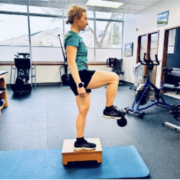The Mystery of Chronically Tight Hip Flexors
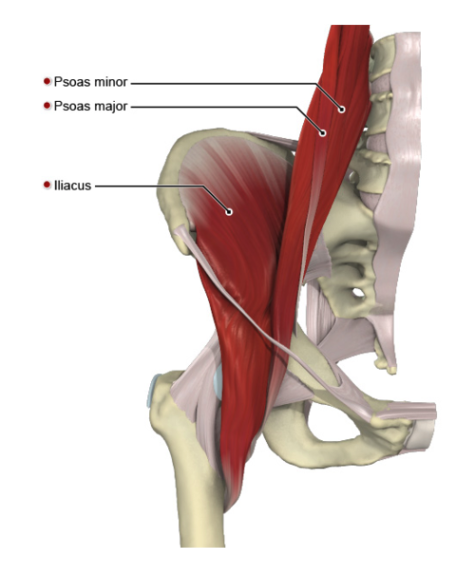 Spring running miles are ramping up and as the ice melts our strides are opening up as well. There is a very good chance that you have felt or been told, you have “tight hip flexors.” Listening to our body is important, but occasionally sensations through the body can be misinterpreted. Feeling tight or stiff can potentially mean there is a muscle/tendon unit that has less length, but there is also a strong possibility when looking at the hip flexor, the sensation could actually be from limited strength. If you feel like you are continually stretching your chronically tight hip flexor to no resolution the answer may be the following—strengthen the hip flexors.
Spring running miles are ramping up and as the ice melts our strides are opening up as well. There is a very good chance that you have felt or been told, you have “tight hip flexors.” Listening to our body is important, but occasionally sensations through the body can be misinterpreted. Feeling tight or stiff can potentially mean there is a muscle/tendon unit that has less length, but there is also a strong possibility when looking at the hip flexor, the sensation could actually be from limited strength. If you feel like you are continually stretching your chronically tight hip flexor to no resolution the answer may be the following—strengthen the hip flexors.
What are the hip flexors?
The notorious hip flexor muscles go by the name Psoas and Iliacus and are responsible for bending our hip and assist us in driving our knees forward when we run. The muscles attach to the lumbar spine, pelvis, and femur. As a result, weak and/or tight hip flexors can impact your lower back, hip, and knee function (3). The hip flexors play a vital role in overall function of the lower body and are essential for walking and running (1). Hip [flexor] muscular strength is associated with optimizing running economy in endurance runners (4).
Why does it hurt? Tight, weak, or both?
Runners, hikers, and agility sport athletes are susceptible to hip flexor related injuries as these muscles are responsible for lifting the thigh up to allow you to step or run (2). True decreased muscle length can result from sitting for long periods of time for work or school. Movement and position change is incredibly helpful in maintaining muscle pliability. The goal is to get up and move around every half hour to hour allowing the hip flexors to relax.
Test yourself, while these measures are not the ultimate decider, you can note how challenging the task feels. When looking at potential tightness you can perform the Thomas test. This is performed by sitting on the edge of a bench or table (feet flat on the floor). Lay back bringing the knees to chest, then slowly release one knee, reaching the foot back toward the floor. Ideally, the foot would be able to reach the floor with the other knee still hugged to your chest.
For a quick rough strength challenge, stand on one leg and bring your knee as close as you can to your chest, then let go with your arms keeping your knee in the same position against your chest. Try and hold this position for at least 10 seconds.
Exercises Progression for Hip Flexors Strength-
The following exercises should be performed slowly, keeping the hip flexors under tension for longer amounts of time. At the peak of each exercise (i.e., the second photo) the position should be held for 3-5 seconds before returning to start. Perform 2-3 sets of 8-10 repetitions.
Beginner Stage:
- Supine Straight Leg Raise
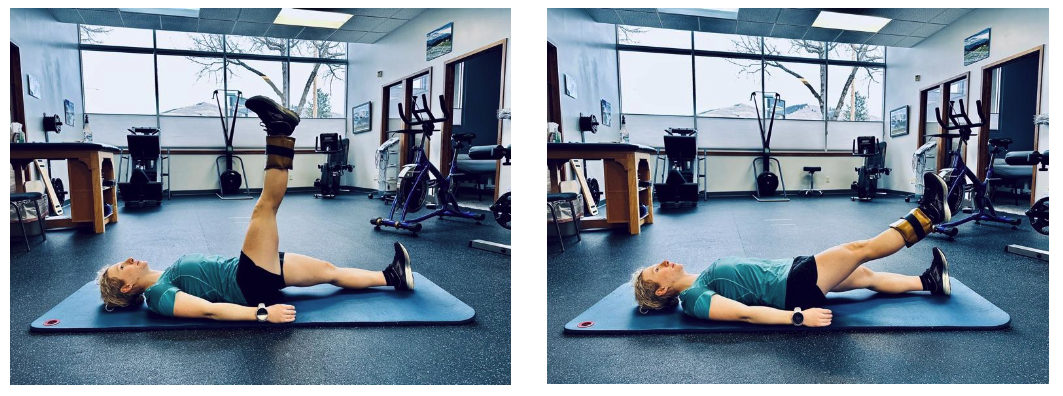
- Supine March with Cable
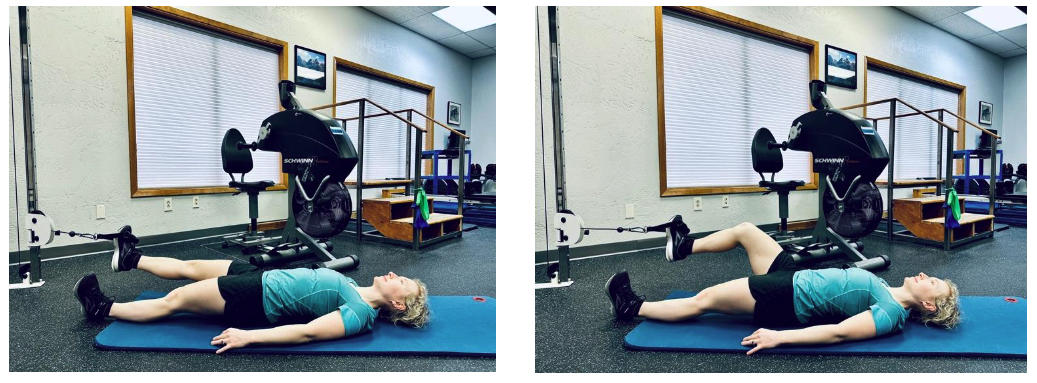
- Seated Straight Leg Raise Over Kettlebell
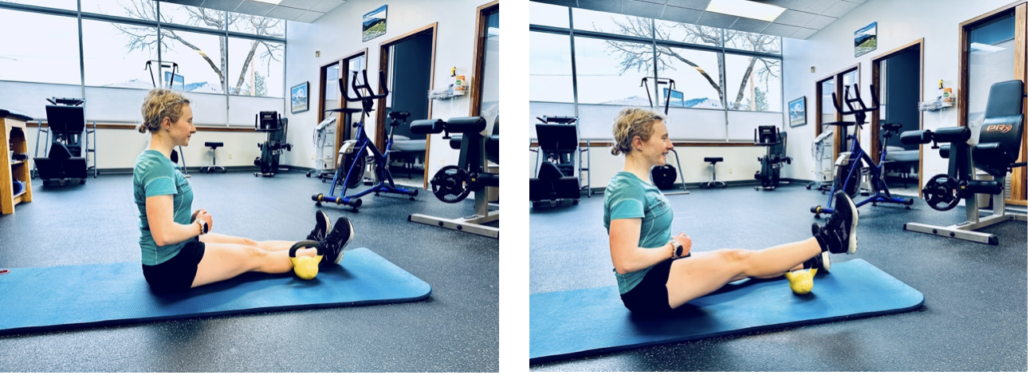
Intermediate Stage:
- Supine Bridge March
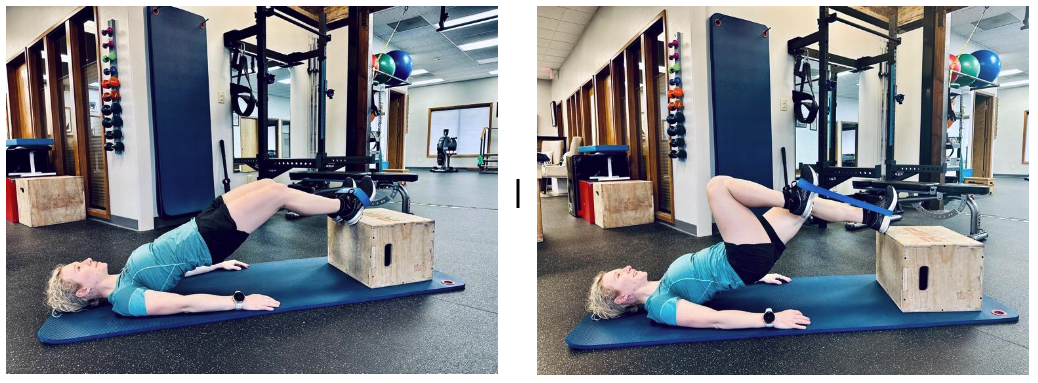
- Mountain Climber March (with band)
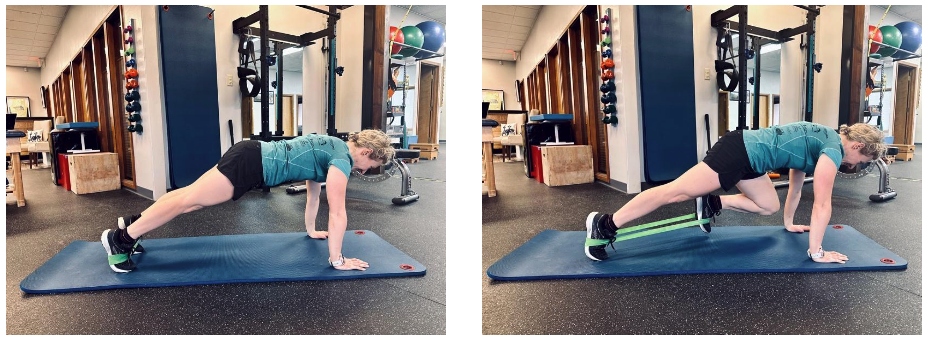
Advanced Stage:
- 90-90 Weighted Eccentric Leg Lowers
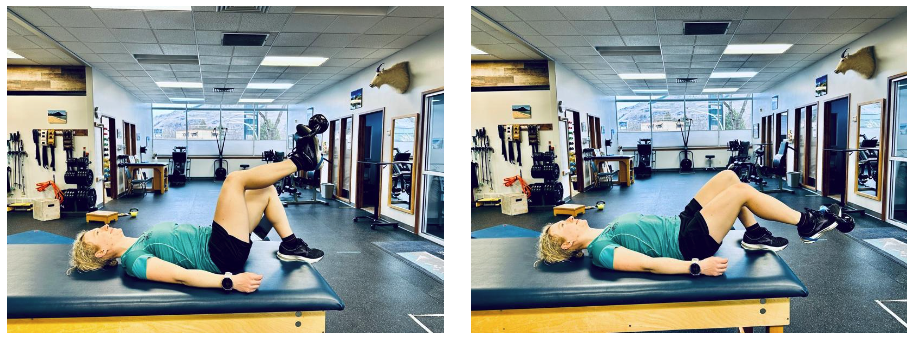
- Standing Weighted March
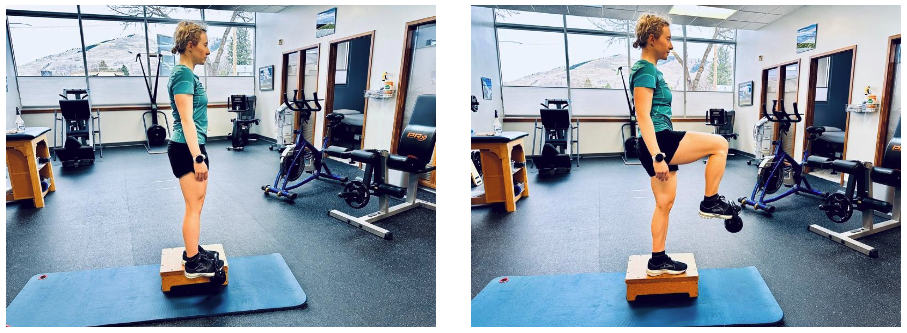
- Reverse Nordics (weighted)
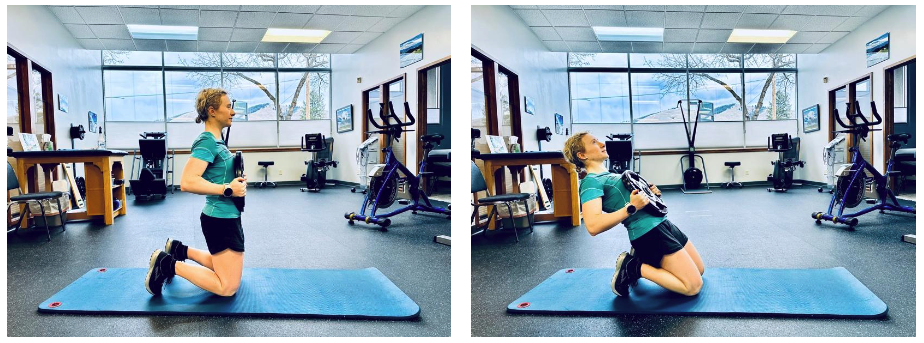
*For more information or guidance following anterior hip flexor weakness/ tightness or pain, schedule an appointment with Sapphire Physical Therapy by calling 406-549-5283.
References
- Ikezoe T, Tsuboyama T, Tabara Y, Matsuda F, Ichihashi N; Nagahama Study group. Weak hip flexor strength predicts progression of functional capacity decline due to locomotor system dysfunction in community-dwelling older adults: A longitudinal cohort study. Arch Gerontol Geriatr. 2021;97:104499. doi:10.1016/j.archger.2021.104499
- Luedke LE, Heiderscheit BC, Williams DS, Rauh MJ. Association of Isometric Strength of Hip and Knee Muscles with Injury Risk in High School Cross Country Runners [published correction appears in Int J Sports Phys Ther. 2016 Jun;11(3):496]. Int J Sports Phys Ther. 2015;10(6):868-876.
- Niemuth PE, Johnson RJ, Myers MJ, Thieman TJ. Hip muscle weakness and overuse injuries in recreational runners. Clin J Sport Med. 2005;15(1):14-21. doi:10.1097/00042752-200501000-00004
- Silva WA, de Lira CAB, Vancini RL, Andrade MS. Hip muscular strength balance is associated with running economy in recreationally-trained endurance runners. PeerJ. 2018;6:e5219. Published 2018 Jul 24. doi:10.7717/peerj.5219

